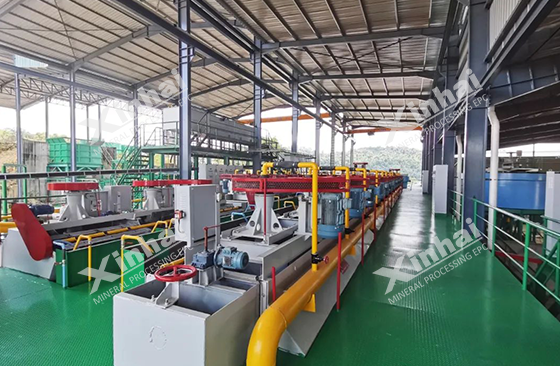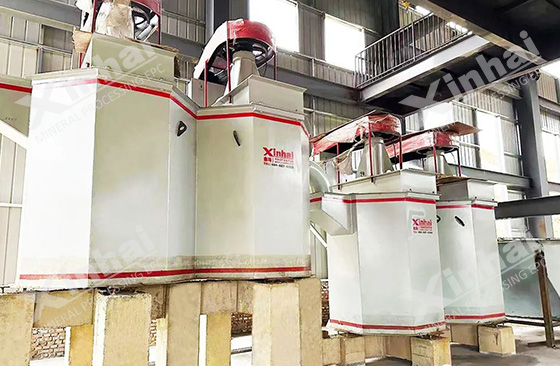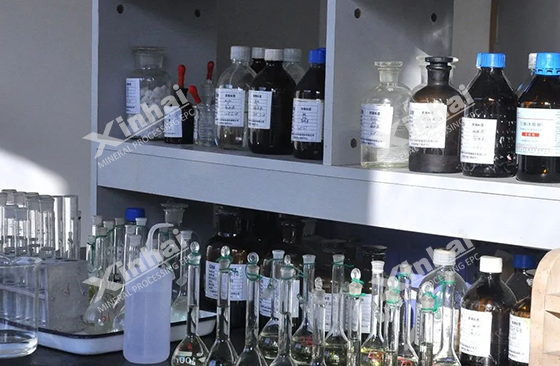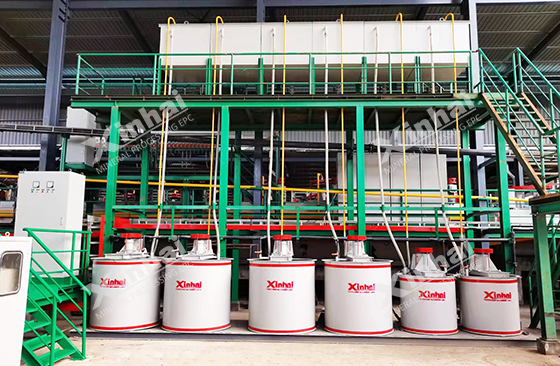When dealing with the flotation process of copper-lead-zinc sulfide ore, it is first necessary to conduct in-depth research on the composition and structural characteristics of the ore to determine the distribution relationship of the main metal minerals in the ore and the distribution characteristics of the copper minerals. Based on this information, a suitable flotation separation process can be designed. The following is a detailed introduction to the four major copper lead zinc ore flotation processes:
Use the table of contents below to navigate through the guide:
01Copper lead zinc ore preferential flotation process

The preferential flotation process is suitable for ores with simple composition, high raw ore grade, and large differences in the flotability of useful minerals. The process includes:
Copper ore flotation: at the first, add inhibitors to inhibit the flotability of lead and zinc minerals, then add collectors to promote the combination of copper minerals and bubbles, and then add foaming agents to stabilize the foam layer to complete the separation of copper concentrates. The amount of chemical added, pH value and temperature need to be controlled during operation.
Lead ore flotation: After copper ore flotation, inhibitors are added to the slurry to inhibit the floating of zinc minerals, collectors are used to collect lead minerals, and foaming agents are added to stabilize the foam layer to separate the lead concentrate. Operations need to be strictly controlled to improve recovery and grade.
Zinc ore flotation: Use copper sulfate as an activator to improve the floatability of zinc minerals, then add a collector to collect the zinc minerals, and then add a foaming agent to float it to separate the zinc concentrate. Effective separation is achieved by regulating the dosage of chemicals and the conditions of the flotation tank.
02Copper lead zinc ore mixed preferential flotation process

It is suitable for polymetallic ores in which useful minerals are unevenly distributed or densely symbiotic with each other, or where one useful mineral is fine-grained in another mineral, and its continuum is relatively coarsely embedded in the gangue. The process includes:
Mixed flotation stage: Add collectors and frothers, and copper, lead, and zinc minerals float together to form mixed concentrates, completing preliminary enrichment.
Detoxication of mixed concentrates: through mechanical detoxication (multiple selection, regrinding, concentration, scrubbing, filtration and washing), desorption (using sodium sulfide and activated carbon) and heating methods, the chemical film on the mineral surface and the excess agents in the slurry are removed.
Separation stage: Adjust the pH value of the slurry and collectors (such as xanthate, butyl xanthate and black drug) in stages to achieve the flotation and separation of copper, lead and zinc minerals in sequence.
03Copper lead zinc ore partial mixed preferential flotation process
The process is suitable for copper-lead-zinc polymetallic sulfide ores with similar floatability. The process includes:

Copper and lead mixed flotation: lime slurry is used to ensure the pH value of the slurry is appropriate. Ty-1 and zinc sulfate are used as inhibitors, and ethyl xanthate and J-21 are used as collectors to achieve effective separation of zinc minerals from copper and lead minerals, ensure that the foam viscosity is moderate, and create conditions for the next step of copper and lead separation.
Copper and lead separation: adopt the method of suppressing lead and flotating copper, using acetate butter and 2# oil as collector and foaming agent to obtain high-grade copper concentrate. Subsequently, the grade of the lead concentrate is improved through a gravity separation shaker, and flotation reagents are adjusted using inhibitors such as cyanide and oxygen-sulfur methods according to the mineral type.
Tailings zinc beneficiation: Roughly select the tailings from copper-lead mixed flotation, and use lime, copper sulfate, butyl xanthate and 2# oil to adjust the flotation pH value to obtain high-grade zinc concentrate. This is followed by two selections and one sweep to ensure the improvement of zinc concentrate grade.
04Copper lead zinc ore isoflotability flowshee

Following the beneficiation principle of "easy first, then difficult", the minerals to be recovered are divided into easy-to-float and difficult-to-float parts according to differences in natural floatability, and are mixed and flotated separately to obtain mixed concentrates, and then the copper is separated in sequence. , lead, zinc concentrate. The process includes:
Mixed flotation stage of easily floatable minerals: The natural flotability of minerals or collectors are used to improve the flotability of easily floatable minerals, and priority flotation is performed to form preliminary mixed concentrates.
Mixed flotation stage of difficult-to-float minerals: By adding sulfiding agent and adjusting the pH value, the floatability of difficult-to-float minerals is improved to obtain a mixed concentrate of difficult-to-float minerals.
Separation stage: copper concentrate is obtained by activating copper minerals with copper sulfate, xanthate collection and foaming flotation with foaming agent; lead concentrate is obtained by adding inhibitors, xanthate collection and foaming flotation with foaming agent; Zinc concentrate is obtained by activating zinc minerals with copper sulfate, collecting sulfur and nitrogen collectors, and bubbling flotation with frothers, thereby achieving effective separation of copper, lead, and zinc minerals in turn.
Through a comprehensive understanding of the four major copper lead zinc ore flotation processes, we can see that when processing copper-lead-zinc sulfide ores, choosing the appropriate flotation process is crucial to improving the recovery rate and grade of the ore. Whether it is preferential flotation, mixed preferential flotation, partial mixed preferential flotation or equal flotation process, each process has its applicable ore characteristics and operating points. In actual production, it is necessary to flexibly select and adjust the flotation process according to changes in the composition, structural characteristics and process conditions of the ore to achieve economical, efficient and environmentally friendly purposes.


 marketing@ytxinhai.com
marketing@ytxinhai.com  0086 13810327080
0086 13810327080 






































































































 CHAT
CHAT MESSAGE
MESSAGE






